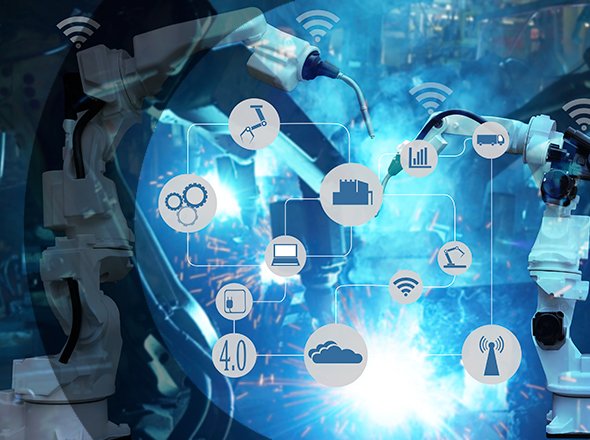How Can Artificial Intelligence Help Your Business?
June 21, 2024

Predictive models are used for demand forecasting and inventory management. Based on historical data and advanced algorithms, these models can predict future trends, allowing companies to optimize their supply chains and make proactive, data-driven decisions. Accurate demand forecasting helps reduce excess inventory, minimize stock-outs, and improve overall operational efficiency.
These models are customized to meet each client's specific needs, considering unique business factors and market conditions. Using state-of-the-art machine learning techniques, forecast accuracy is continually improved, ensuring customers always have the most reliable insights at their disposal. This approach not only improves operational performance, but also provides a competitive advantage in the market.

Personalized recommendation systems analyze user behavior to suggest relevant products or content. Essential for improving the customer experience and increasing sales on e-commerce platforms and digital content services, these systems understand users' preferences and patterns, offering highly targeted suggestions that increase engagement and satisfaction.
Powered by sophisticated algorithms that learn and adapt over time, these systems ensure recommendations remain accurate and relevant. Using collaborative filtering, content-based filtering, and hybrid methods, they meet users' diverse needs and preferences, driving higher conversion rates and promoting customer loyalty.

The integration of MLOps (Machine Learning Operations) practices is essential to efficiently manage the lifecycle of machine learning models, from development and training to deployment and continuous monitoring. MLOps ensures that models are constantly delivering value and can be updated or re-trained as needed.
MLOps solutions streamline workflows, improve collaboration between data science and IT teams, and increase the overall robustness of machine learning initiatives. By implementing best practices and tools for version control, automated testing, and model performance monitoring, ML operations become reliable and scalable, helping companies maximize the return on their AI investment.

Robotic process automation (RPA) is used to automate repetitive and manual tasks, improving operational efficiency. These solutions reduce errors, increase productivity, and free employees to focus on higher-volume activities.value. By automating routine processes, companies can achieve significant cost savings and improve overall workflow.
RPA implementations are customized to meet each client's unique requirements, ensuring seamless integration with existing systems and processes. Using intelligent automation tools, scalable and flexible RPA solutions are created that adapt to changing business needs. This approach not only optimizes current operations, but also prepares companies for future growth and technological advancements.

Computer vision solutions use AI to interpret and analyze images and videos. Applications include object recognition, real-time video analytics, optical character recognition (OCR), and more, enabling a wide range of industrial and commercial uses. By leveraging AI, powerful tools are provided that can transform visual data into actionable insights.
Applied in various sectors, including security, healthcare, retail and manufacturing, computer vision technology uses advanced neural networks and deep learning techniques to ensure high accuracy and efficiency in processing visual data. These solutions not only improve operational capabilities, they also drive innovation and improve decision-making processes.

Generative AI is used to create new content, such as images, texts and even product designs. Using advanced machine learning techniques, these solutions can generate innovative and creative results, adapted to specific customer needs. Generative AI is transforming industries by enabling rapid prototyping, content creation, and personalized experiences at scale.
Generative AI applications span multiple industries, from fashion and design to marketing and entertainment. Leveraging generative models such as GANs (Generative Adversarial Networks) and transformers, high-quality original content is delivered that meets the highest standards of creativity and functionality. This technology empowers companies to stay ahead with cutting-edge innovations.

Predictive maintenance models use historical and real-time data to predict equipment failures. These models allow companies to perform maintenance before a failure occurs, thereby reducing downtime and repair costs. By predicting when and where failures may occur, companies can plan maintenance activities more effectively and avoid unexpected outages.
Designed to be highly adaptable, these models accommodate multiple machine types and operating environments. Integrating sensor data and machine learning provides accurate predictions and actionable insights. This proactive maintenance approach not only extends the life of equipment, it also increases productivity and overall safety.
The application of artificial intelligence to diverse aspects of business offers a unique opportunity to transform operations, improve efficiency and achieve a significant competitive advantage. From accurately forecasting demand to automating processes and creating innovative content, AI is empoweringcompanies to make more informed decisions and quickly adapt to market changes. Investing in AI solutions not only optimizes current operations but also prepares companies for a technology-driven future. With the right tools and strategies, companies can maximize their potential and reach new heights of success.
Find out more at:
Impacts of Artificial Intelligence and Machine Learning on Industry The implementation of Artificial Intelligence (AI) in industrial processes has proven to be a game changer in increasing efficiency and innovation. The adoption of AI in automation and data analysis systems allows the optimization...
Read moreIT outsourcing has become a strategic practice for companies seeking to optimize their operations, reduce costs and expand their capabilities without overloading their internal resources. By delegating information technology-related tasks to specialized providers, companies can focus on their core...
Read moreLayered Data Architecture: The Medallion Model The tiered data architecture is structured into three main levels: Bronze, Silver and Gold. This model provides a solid foundation for data processing, ensuring an efficient and scalable approach throughout the data lifecycle. Bronze Tier:...
Read moreWe live in the age of data, where the ability to collect, process and interpret information on a large scale has become essential for the success of organizations. The increasing digitalization of processes, the proliferation of connected devices and the expansion of social networks have generated...
Read moreIn today's business environment, the volume of data generated is immense and continues to grow exponentially. Using this data strategically is essential to obtain valuable insights, optimize processes and make more informed decisions. Implementing a structured data strategy involves several...
Read moreThis site informs: we use cookies to customize ads and improve your site experience. By continuing to browse, you agree with our Privacy Policy..
continue and close